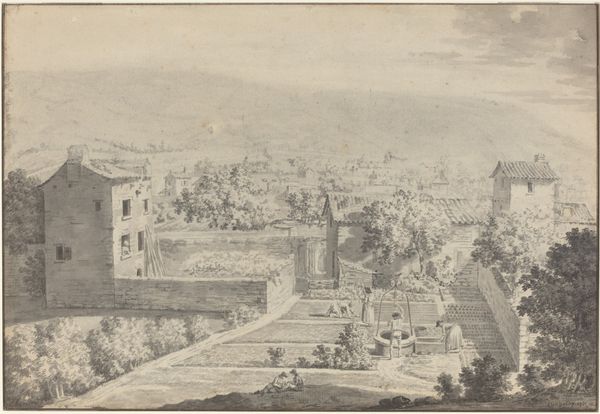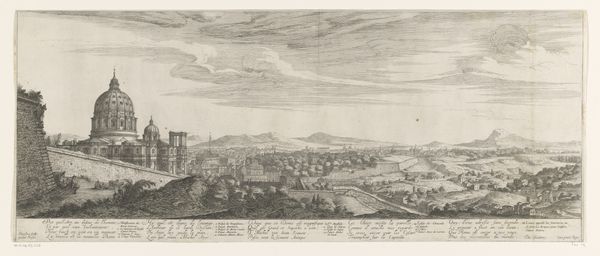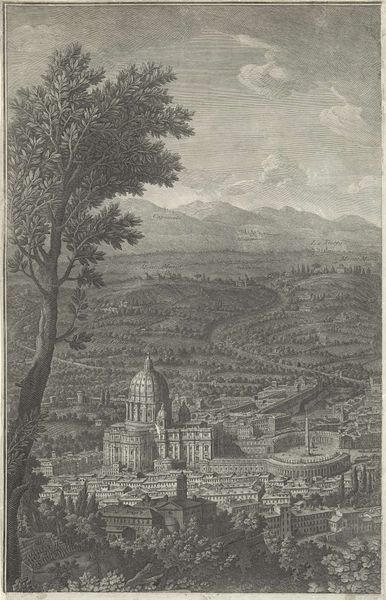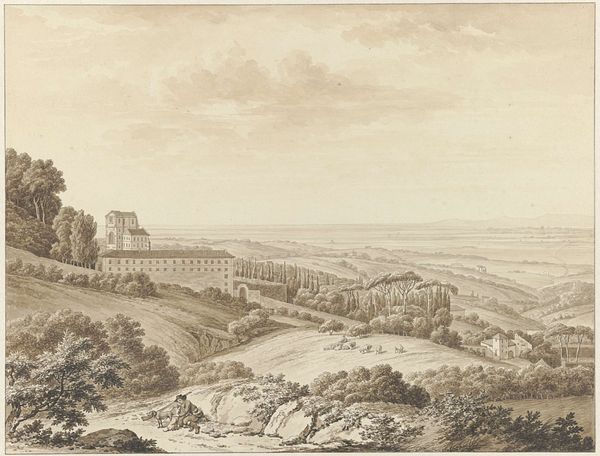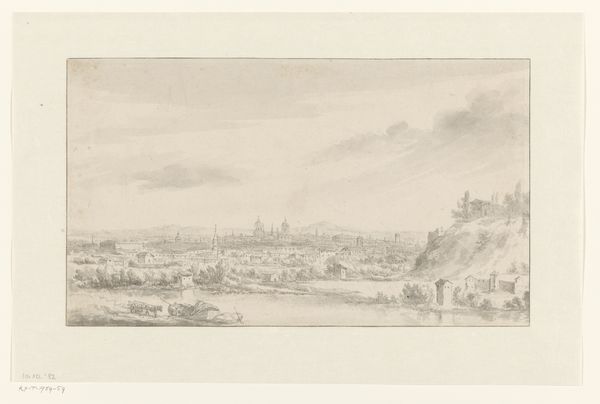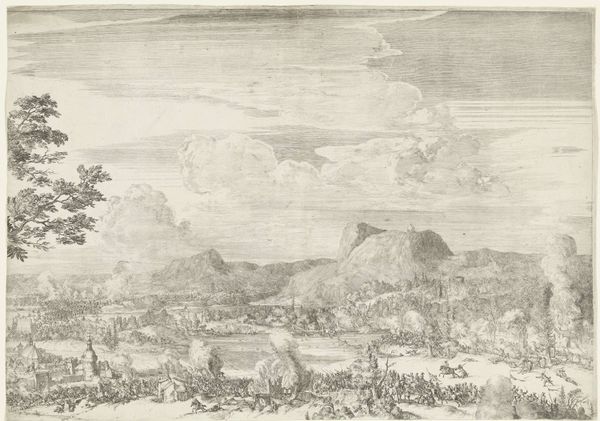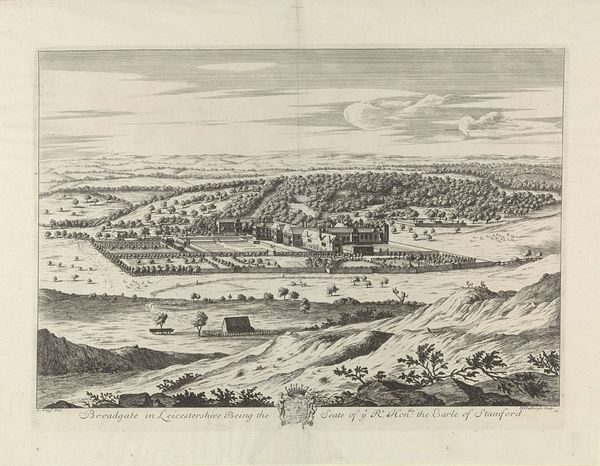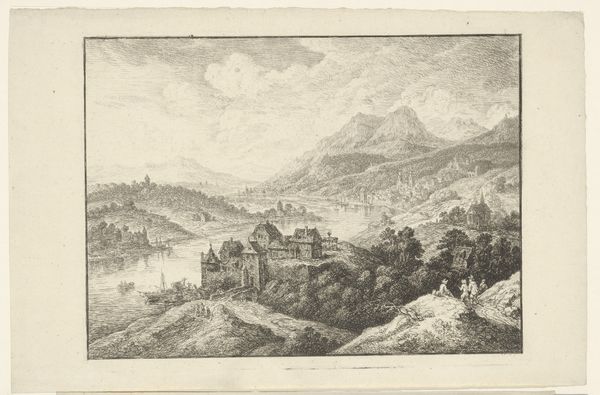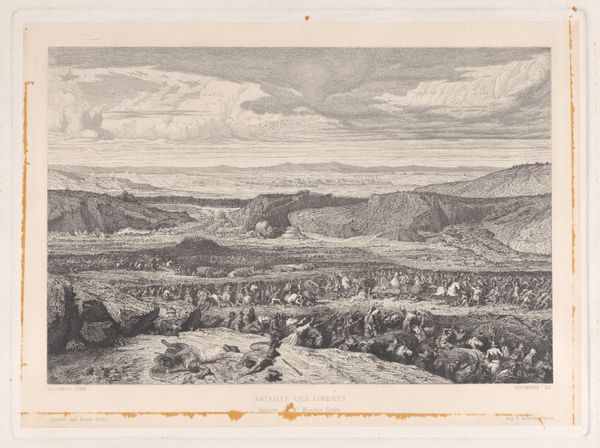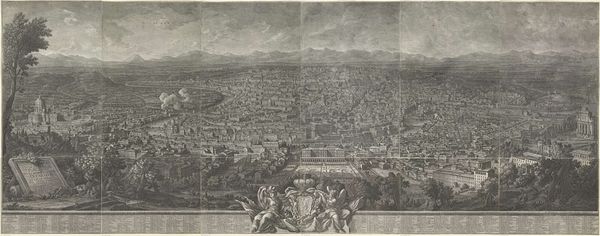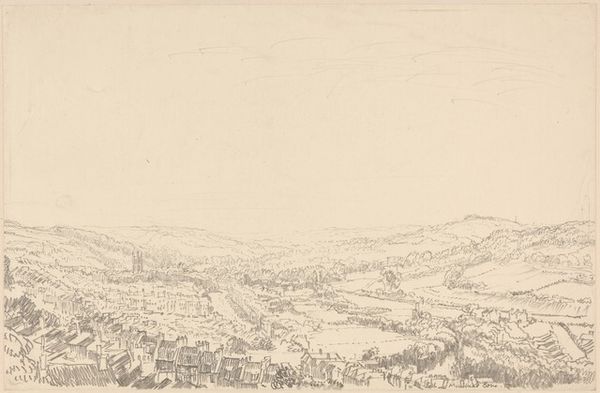
Dimensions: height 444 mm, width 700 mm
Copyright: Rijks Museum: Open Domain
Giuseppe Vasi's rendering of Rome, likely created mid-18th century, captures a city caught between its imperial past and its status as a site of pilgrimage and the Papal seat. Giuseppe Vasi dedicated his career to etching views of Rome, catering to the tastes of wealthy Europeans on the Grand Tour. This image creates meaning through its detailed depiction of Roman architecture, both ancient and modern. We see the Aventine Hill, one of the famed Seven Hills of Rome, but the eye is drawn to the meticulously rendered buildings, perhaps suggesting a desire for rational order. The inclusion of the Pyramid of Cestius reminds viewers of Rome's long history, one layered with varied architectural and cultural influences. The culture of the Grand Tour fueled a market for such images, defining Rome as a site of cultural tourism. To understand this image better, it helps to study guidebooks of the time, tourists' journals, and the biographies of artists such as Vasi. Art always exists within a complex set of social and institutional relations.
Comments
No comments
Be the first to comment and join the conversation on the ultimate creative platform.
